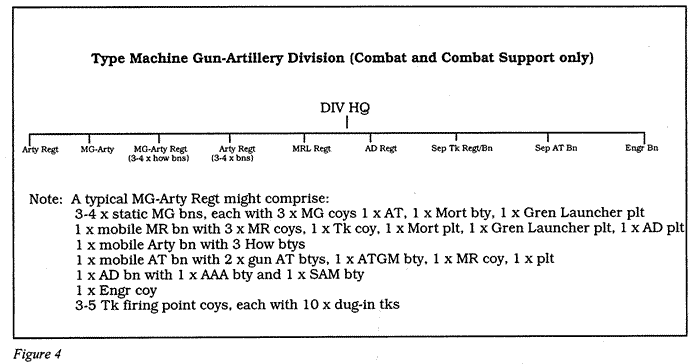Muti-
I have the English translation as well, and I also find it's not that useful. I had better luck with the Russian version!
Antimedic-
The fortified regions are smaller versions of the machinegun-artillery divisions. A
1996 US Army report described them:
"Machinegun-Artillery Divisions
In accordance with the need to defend extended sectors with fewer troops and at lower cost, the Basic Forces now also field some machine gun-artillery divisions. These are linear descendants of the World War II fortified regions.
They are strong in machineguns, mortars, artillery, antitank guided missiles, and dug-in tanks, but weak in bayonet and modern tank strength. There is no standard organization for these divisions as they are tailored specifically to the terrain they are to defend.
The role of these semi-static, economy of force formations (and of separate machinegun-artillery regiments) is to hold long secondary sectors or areas where the terrain is especially suited to positional defence. Their tactical areas of responsibility are fortified in peacetime with well prepared and camouflaged primary and alternate positions and plentiful dummy/reserve ones. They form a series of independent strongpoints, often echeloned in considerable depth, with limited counter-penetration and counterattack reserves to plug gaps and support the defense. Figure 1-4 [below] illustrates one of a number of possible variations of organization."

A few I've been able to find details on:
97th Fortified Area (Priargunsk): 3 motorized rifle bns (4 companies in each), a combat engineer bn, 4 tank Bns (also w/ 4 companies each), AT Bn (85mm AT) & BM-21 Btry
and
11th Fortified Region (Bogdanovka, Chita oblast): 5 machinegun-artillery battalions, a T-55 battalion, BM-21 battalion and engineer company.
These units don't play much of a role in my vision of the war. They are generally along the Chinese, Turkish or Iranian borders, all of which the Soviets fight well beyond. By the time (if) NATO troops get close to those borders, the garrisons have been stripped of men, ammunition and mobile troops.